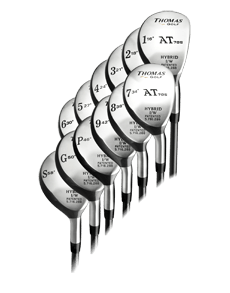 How important is pre game stretching to your performance?
How important is pre game stretching to your performance?
As I get older, my muscles not only need more time to recover after walking 18 holes, but they also need more time to get ready for that 5 mile walk. Most non-golfers think that we are nothing more than wannabe athletes. While that might be the case for some, the rest of us know how wrong that assumption is.
In the past I have never been one to stretch a whole lot. That’s not to say that I never stretched, just that it wasn’t a high priority. Now however, a good stretch not only prepares me for 18 holes, but helps me to not be in as much pain after the 4-5 hour walk.
Muscles used in Golf
The golf swing comprises four elements – the back swing, downswing, ball strike and follow-through. The physics are pretty simple. More club head speed=longer shots. (Newtons’ 3rd law of physics) Longer shots with control=less strokes used to get the ball in the hole.
There you have it…Golf 101. In order to pull this off, the following muscles are important. Core muscles are used to torque your body and increase club head speed. Your hamstring muscles help maintain proper posture. Then, your quadriceps help to flex your knees and keep them flexed throughout the swing.
The upper back muscles are important for both, rotation of your trunk during your backswing and for maintaining your spine angle. In order to get your upper body positioned properly your shoulder muscles must be prepared to take charge. In transition, they also help to generate the speed needed to maximize distance. Of particular interest here are the rotator cuff muscles, as they seem to degenerate faster than other muscles in the area.
Strong forearm muscles are used in conjunction with the wrist muscles to control the orientation of the club and then snap through the impact zone in a final attempt to gain speed and power. The fingers and wrists are of particular importance to the fine art of putting, as they aid in developing a repeatable stroke.
The Benefits of a Golf Stretching Routine
Golfers often complain, as other athletes do as well, of muscle strain and fatigue. If you develop a regular golf stretching routine, you can expect the following benefits:
- Loose muscles help us to relax. The last thing you need as you step on the first tee is to be tense and anxious. Increased confidence and better performance will be a result of loose muscles and a relaxed frame of mind.
Playing golf is like eating. It's something which has to come naturally. – Sam Snead
- At first, stretching hurts, but, over time, it will become easier and more beneficial to your overall wellness. Your range of motion will improve dramatically.
- Stretching can aid in the prevention of:
- Rotator cuff tendinitis
- Knee tendinitis
- Musculotendinous overuse injuries
Most importantly, stretching just makes you feel better. Talk with somebody who stretches and they will tell you how they feel if they don’t stretch prior to, and after golf.
I suggest that, before you enter into a stretching routine, discuss exactly what you want to do with your family doctor. He/she will let you know if there might be any detrimental effects of what you are proposing to do. Whatever you do, do it right. Injuries can occur from exercises and stretching if not done properly.
Update:
Pre-game stretching is a crucial aspect of preparing for any physical activity, including golf. It plays a significant role in improving performance, preventing injuries, and enhancing overall flexibility and mobility. Here's why pre-game stretching is essential for golfers, along with some common questions and answers about the topic:
Importance of Pre-Game Stretching for Golfers:
- Improved Flexibility: Pre-game stretching helps increase muscle and joint flexibility, allowing golfers to achieve a full range of motion during their swings. This improved flexibility can lead to smoother and more efficient movements throughout the golf swing.
- Enhanced Performance: Proper stretching can lead to better swing mechanics and increased clubhead speed. It can also improve accuracy and shot consistency by allowing golfers to maintain a more stable and balanced posture during their swings.
- Injury Prevention: Engaging in dynamic stretching before a round of golf can help warm up the muscles and reduce the risk of injuries. Stretching increases blood flow to the muscles, which makes them more pliable and less prone to strains or pulls during the golf swing.
- Mental Preparation: Pre-game stretching can serve as a mental warm-up, helping golfers focus their minds and get into the right mindset before stepping onto the course. It can also be a calming and centering activity that reduces pre-game nerves.
- Increased Blood Circulation: Stretching increases blood flow to the muscles and prepares the body for physical activity. This, in turn, can improve overall endurance and stamina during a round of golf.
- Post-Round Recovery: Stretching after a round of golf can aid in reducing post-game muscle soreness and promote faster recovery.
Q&A on Pre-Game Stretching:
Q: How long should I spend on pre-game stretching before a round of golf? A: Aim to spend about 10-15 minutes on pre-game stretching. This allows enough time to focus on all the major muscle groups involved in the golf swing.
Q: What type of stretching should I do before golfing? A: Dynamic stretching is recommended before golfing, as it involves moving the muscles through their full range of motion. Focus on exercises that mimic the motions of the golf swing, such as arm circles, hip rotations, and trunk twists.
Q: Can I do static stretches before golfing? A: While static stretching can help with flexibility, it is best to save static stretches for after your round or as part of a separate flexibility routine. Dynamic stretching is more effective for preparing the body for physical activity.
Q: Should I stretch both sides of my body equally? A: Yes, it is essential to stretch both sides of your body equally to maintain balance and symmetry. This can help prevent imbalances that may lead to swing faults or injuries.
Q: Can I use resistance bands for pre-game stretching? A: Yes, resistance bands can be a useful tool for pre-game stretching as they provide resistance and help activate muscles more effectively.
Q: Can pre-game stretching improve my golf swing? A: Yes, proper pre-game stretching can improve your golf swing mechanics by increasing flexibility and range of motion. This can lead to a more fluid and efficient swing.
Remember that individual stretching routines may vary based on personal needs and physical condition. It's essential to listen to your body and avoid any movements that cause discomfort or pain. Incorporating pre-game stretching into your golf routine can significantly contribute to improved performance, injury prevention, and overall enjoyment of the game.





